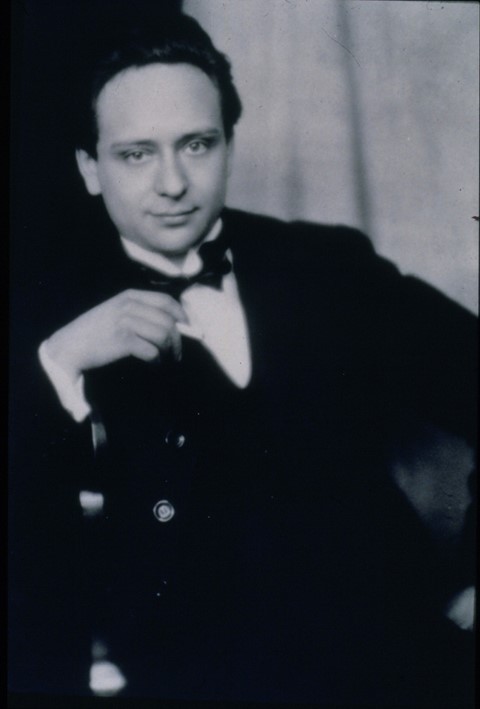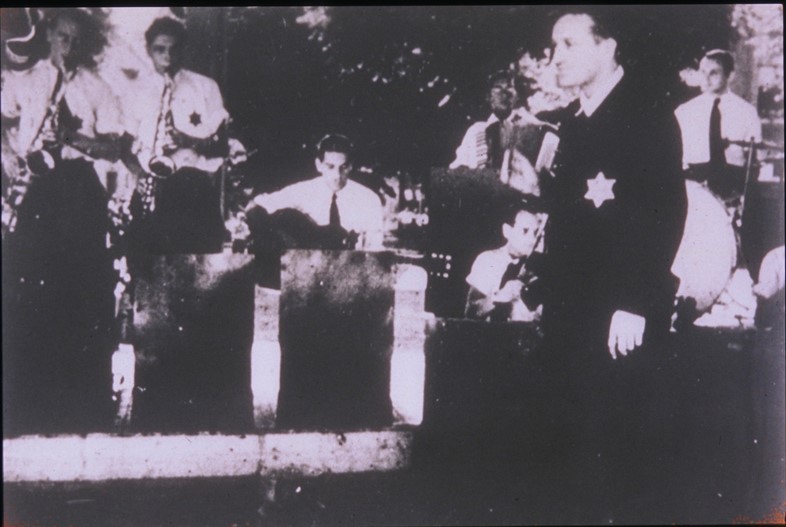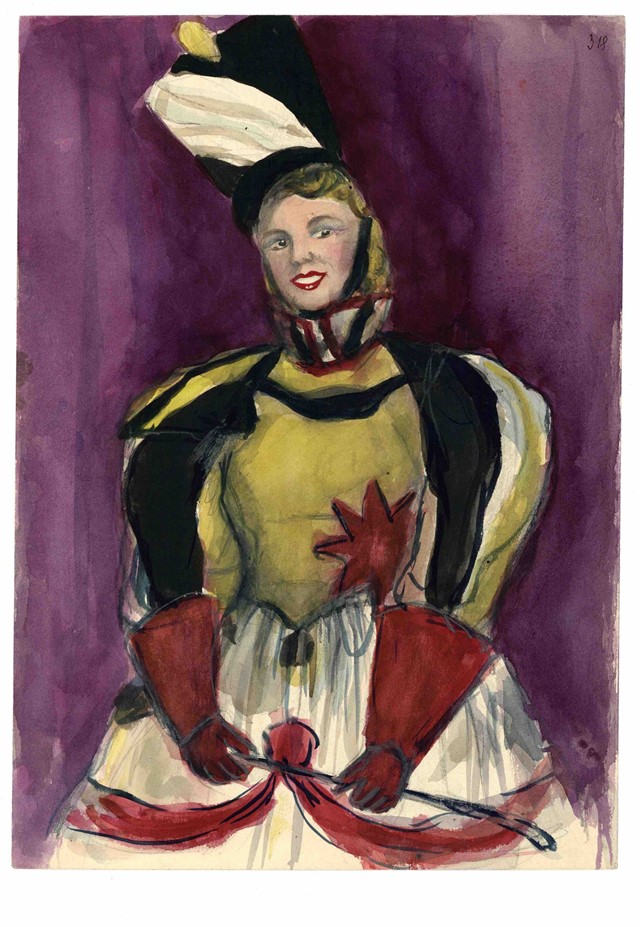A new book published by Steidl tells the story of a group of imprisoned artists and musicians founded in Terezín, a Nazi concentration camp
40 miles northwest of Prague, Czech Republic, where the Ohře and the Elbe rivers meet, lies Terezín; a small town home to just under 3,000 residents. Despite its relative insignificance on a map, the former military fortress bears a heavy history, with stories of life and death.
In 1941, Terezín was selected by the Nazis as a “ghetto settlement” for Czech Jews, and in November of the same year, 342 Jewish men – cooks, carpenters, engineers – were rounded up and sent to convert the town into a concentration camp. The following year, the Austrian composer and critic Viktor Ullmann was sent there, accompanied by his wife and many other musicians, both amateur and professional.
The Nazis embarked on a propaganda campaign to push the narrative that Terezín was a place of harmony and luxury. But in reality, conditions were bleak: people were starving, and its overcrowded walls were ravaged with disease. 33,000 people died there, with over 70,000 more transported east to their deaths in the gas chambers. But, despite everything, it was a place where Ullmann helped foster a resolute, functional cultural community.

Prisoners at the camp were only allowed 50 kilos of luggage. To offer them hope, the Nazis instructed them to pack things that they’d later confiscate immediately, such as food, clothing or cooking utensils. Many musicians chose to smuggle instruments inside, despite it being illegal for Jews to own them. One prisoner cut his cello into fragments, lined his jacket with the shards, and glued it back together once inside the camp. These acts of rebellion and defiance from imprisoned artists led to secret performances and recitals on the inside. The Nazis found out, and for a year they oscillated between shutting down the performances or remaining indifferent to them. Eventually, an “official” Jewish-run cultural programme emerged called the “Freizeitgestaltung” (English translation: recreation), which included sports, theatre and music.
Other classically trained composers such as Gideon Klein and Pavel Haas were also transported to Terezín and together they built an astonishing creative legacy that is easy to mistake as the product of a free, bustling mid-20th century European city. In 1944, the International Red Cross Committee was shown around as if Terezín was a paradise, with fake cafes and shops put up, and beautiful flowers imported from Holland. The Nazis even designed sham street signs to a post office, a bank and a dentist. None of these things actually existed, but it worked. Following the visit, Jews were forced to help create a propaganda film featuring adults and children performing an opera, pushing the lie that Terezín was a harmonious family-friendly haven of culture and self-expression.
Viktor Ullmann’s prominence as a musician likely freed him from hard labour. With no financial worries inside the camp, Ullman devoted his entire time there to music – performing, composing, criticising. Before he was sent to his death in Auschwitz, Ullmann placed all of the work he made during his time in the camp into the hands of the Terezín ghetto librarian. This archive of critiques and artwork miraculously survived, and has now been compiled into a book called Our Will To Live, written by chamber musician Mark Ludwig, the founder of the Terezín Music Foundation.

“It was almost like uncovering a manuscript,” says Ludwig. “When you hear this music come to life in your mind’s ear – the beauty, the power of it, the lyricism, the vast array of styles and emotional content – and then you couple that with its history, it adds an even greater dimension to it. To think that it was written in a concentration camp, written amidst death and deprivation, and yet there is this creative determination to give us works of music.”
Ludwig’s book, published by Steidl, is an archive of 26 concert programs that took place in Terezín, accompanied by Ullman’s critiques and beautiful artwork made secretly to promote the events within the camp’s walls. Ullmann’s intellect leaps off the pages and his criticisms of the work created in Terezín are generous, warm, but robust – this is a man who took his work seriously. “He is hoping that they have a future beyond the confines of the concentration camp, that one day they will return to a life where they can have their own careers and they can be free,” says Ludwig. “He is quoting philosophers, making references spanning visual arts, music, politics, history. He doesn’t have a search engine. You can see it – this is a great intellect.”
“All of them had this indomitable spirit to create,” says composer David Post. “They had to write music as much as they had to eat, drink, or sleep. Creation for them was a necessity, to keep sane, to keep alive, to feel as though they had some type of meaning in this absurd situation.”
Viktor Ullmann’s Third String Quartet is a dramatic, playful composition that jumps between hyperactivity and melancholic stillness. Karel Švenk’s Lullaby is a sweet, drifting piece that sounds like it’s been made for sleeping children. While imprisoned in Terezín, the same composer also wrote the protest song Why Does the Black Man Sit at the Back of the Car? – the sarcastic sound poking fun at the insanity of racism, the farce of their predicament. The existence of this music is a reminder of our compulsion for culture, of what it means to be human.

Inge Auerbacher, a Jewish chemist and author, spent three years in Terezín from the ages of seven to ten. Now 87, she recalls the Jewish children’s operas Brundibár and The Fireflies being performed secretly inside the camp: “Anything to enlarge hope. Something real, something to look forward to.”
Auerbacher becomes animated while remembering the famous visit of the International Red Cross Committee, when The Fireflies was performed for a visiting convoy who were being duped by the Nazis into believing that Terezín was a place of harmony, using the Jewish cultural programme to their advantage. “They painted the house, they put signs on the street – all bogus stuff,” she says. “They had a music pavilion, they played music for them while they marched by. It was all hocus pocus, and when they left almost everybody was sent to Auschwitz.”
In the face of death, Viktor Ullmann and his contemporaries created a manifesto for life. Our Will To Live is a unique archive of humanity’s ability to manufacture light from darkness, an absorbing archive of who we are, and a document of the difference between survival and living. In his 1944 essay Goethe and Ghetto, Viktor Ullmann wrote: “I would only like to emphasise that my musical work was fostered and not inhibited by Theresienstadt, and that we in no way merely sat around lamenting by the banks of Babylon’s rivers, and that our desire for culture was equal to our will to live.” There’s something beautiful about the fact that Terezín was where Ullmann truly found himself as an artist and a critic; in his own way, he thrived there. Viktor Ullmann left Terezín labelled simply as ‘Transport 946’, but left behind a trove that ensured his name will never be a number.
Our Will to Live by Mark Ludwig, published by Steidl, is out now.
